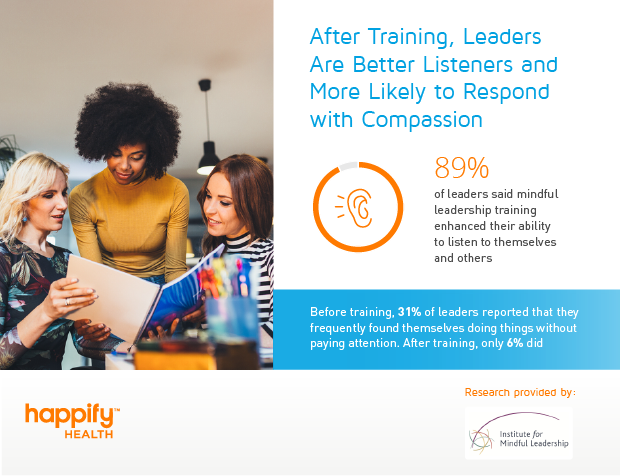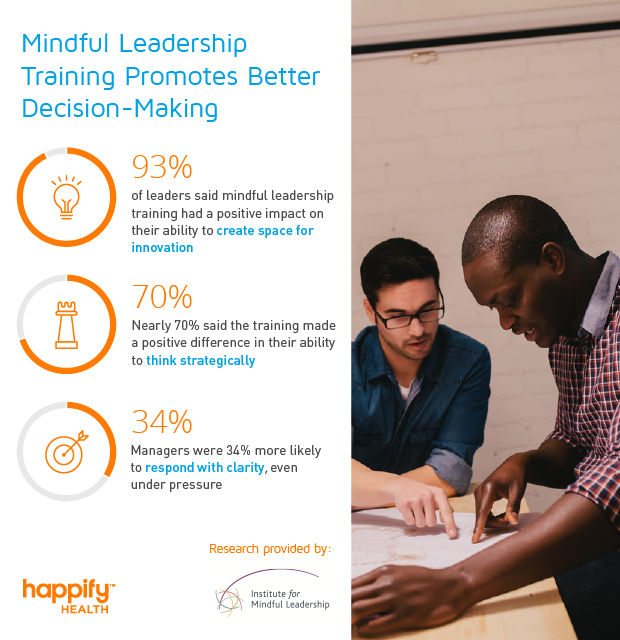Control is one of humankind’s greatest illusions. Let’s face it—even with all the information available and expansive educational preparation—unexpected events often interfere with our plans and our best efforts to control an outcome or an event (and even ourselves!). And what happens to us, to those around us, and to the teams and organizations we lead when things get disrupted?
For many of us, it depends on the day. There are times when we run into an obstacle and see it as an opportunity for creativity, a challenge that excites us. Then there are times when an obstacle throws us off balance, creates confusion and stress, and ‘leaks’ out in actions, whether verbal or physical. These reactions are, at best, counterproductive, and at worst, disrespectful and injurious. It all depends on our mind’s ability, on that day, in that moment, to regain equilibrium quickly so we can respond with spaciousness and creativity.
Fortunately, it’s possible to cultivate this capacity of the mind and train it in the same way we would train our body to be stronger, more flexible and fit. And, for this training to be particularly effective, it should be done in the context of strengthening and expanding our capacity to lead.
In the past several years, new leadership training has emerged, one steeped in the knowledge that leaders have the capacity to strongly influence others and our world, for better or worse. It also recognizes that the vast majority of people in leadership roles have strong minds, deep expertise and good hearts. This training is based on the mental discipline of mindfulness practice. It cultivates the mind’s innate ability to be present, and it applies this learning to everyday life. The research results have been startling—both in what people already recognize about their lives, and in what evolves in a short period of time. And while there are practices specifically relevant to the most senior leaders, there are also mindful leadership courses that recognize the leadership potential at every level of an organization.
A survey research project involving more than 75 graduates of three of our mindful leadership courses offers some extraordinary insight. The participants responded to 19 statements asking them to indicate the frequency of a certain behavior using a six-point scale (‘almost always’ to ‘almost never’). When responding to the statement ‘I am able to be fully attentive to a conversation,’ only 34 percent of participants answered in the top two boxes (almost always/very frequently). Nearly two-thirds of the participants knew they were not fully listening to conversations most of the time. After the participants had been practicing mindful leadership training for just seven weeks, the number increased from 34 to 74 percent. As participants begin to develop the capacity to notice when the mind is not present and redirect their attention as part of their daily assignments from the course, they also recognize what is missing in a state of mind that is only partly ‘there.’ Similar numbers were seen when the survey asked about the ability to be ‘fully attentive in meetings, conference calls and presentations’ (31 percent before the training and 75 percent after the training).
Recent mindful research on leadership and work:
Meditation can boost productivity at work: Eight weeks of mindfulness training later, a group of human resource managers proved to be less stressed and more able to concentrate on tasks than their counterparts who did not receive the training.
Mindful multitasking: Meditation training can help you stay on tasks longer, with fewer distractions, and also improves memory and reduces stress.
Female entrepreneurs more likely to meditate: Research by Baylor University in Waco, Texas reveals that 37 percent of female entrepreneurs practice meditation—almost 10 percent more than their male counterparts.
And while these numbers and results are compelling, giving us a glimpse into the cultivation of the mind’s capacity to be less reactive and fully present, they tell only part of the story. The rest of the story involves the rediscovery of the passion that first brought participants to their chosen profession or to their leadership aspirations. Time and again, peopl e are able to answer the call to be of service to their teams, to be compassionate leaders, to push the boundaries of knowledge, to the development of solutions to the world’s problems, and to the quality of overall excellence and engagement they find fulfilling.
e are able to answer the call to be of service to their teams, to be compassionate leaders, to push the boundaries of knowledge, to the development of solutions to the world’s problems, and to the quality of overall excellence and engagement they find fulfilling.
It also isn’t a surprise, that when asked about the frequency with which participants are ‘distracted by thoughts about work when at home, or about home when at work,’ 64 percent said ‘almost always/very frequently.’ This is of note because it is so widespread as well as being self-reported as a ‘distraction.’ What participants learn from mindful leadership training is that they don’t need to be victims of these thoughts that carry them away from where they are. With practice, they can learn to redirect the thinking mind and be fully attentive to the present. Seven weeks after they began the journey of cultivating mindful leadership, the survey response in the ‘almost always/very frequently’ categories dropped from 64 to 17 percent. Imagine the energy conserved and the productivity enhanced from this change alone!
If we remove drains and distractions like this, or significantly lessen them, there undoubtedly will be more room for the spaciousness and clarity to allow us to respond with flexibility, calm and creativity when the unexpected occurs, and to simply and importantly be fully at work when we are at work, and fully at home when we are at home.
 Another critical ability the participants began to cultivate was to lessen the time that we live on auto-pilot—sometimes considered the only way to make it through the day. Participants learned that stopping and making the effort to be purposeful improved their capacity to be at their best and enhanced their productivity and clarity. The responses to one of the simplest survey questions illustrate one aspect of this: only 26 percent of the participants said they frequently took time each day to optimize personal productivity. After the training, this number jumped to 87 percent. Why? Perhaps it was because they experimented with stopping and allowing themselves to question some of the autopilot and cultural norms that sometimes become ingrained as we juggle the demands of work/family/community.
Another critical ability the participants began to cultivate was to lessen the time that we live on auto-pilot—sometimes considered the only way to make it through the day. Participants learned that stopping and making the effort to be purposeful improved their capacity to be at their best and enhanced their productivity and clarity. The responses to one of the simplest survey questions illustrate one aspect of this: only 26 percent of the participants said they frequently took time each day to optimize personal productivity. After the training, this number jumped to 87 percent. Why? Perhaps it was because they experimented with stopping and allowing themselves to question some of the autopilot and cultural norms that sometimes become ingrained as we juggle the demands of work/family/community.
As we explore mindful leadership training and its relationship to the aspects of life outside our ‘control,’ we learn a valuable lesson. What’s needed now, more than ever, is the ability to cultivate our mind’s capacity to be present, to experience life exactly as it unfolds, and to unwrap this potential gift of leadership presence with clarity, compassion and joy.
Janice Marturano is the Founder and Executive Director of the Institute for Mindful Leadership and the award winning author of the international bestseller Finding the Space to Lead: A Practical Guide to Mindful Leadership. Join Janice for a Cultivating Leadership Presence Retreat at the Menla Mountain Retreat in New York on April 18-22, 2018, or for an live and interactive Finding the Space to Lead ONLINE workshop in May, 2018.
